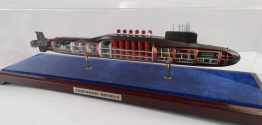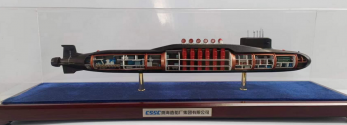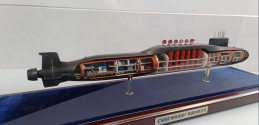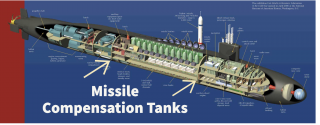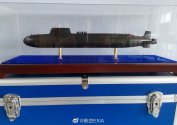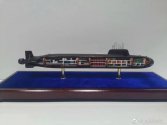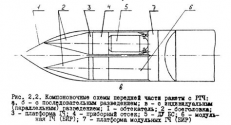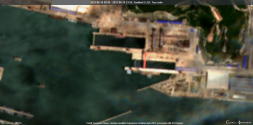I think that SSBNs are still pretty useful going into the future - That's why most nuclear-armed countries are still pursuing newer SSBNs today, including China.
Sure, SSBNs are expensive to procure, costly to operate and maintain, and tricky to dispose of - But the very values which SSBNs can bring to the nuclear deterrence table, especially when compared to land-based and aerial-based nuclear delivery platforms - Makes the platform a highly worthwhile investment for nuclear-armed countries to pursue.
---
Even if, say, one of China's 094A SSBN is being constantly tailed by the US' Virginia SSN during its deterrence patrol somewhere in the Pacific:
#1 - The 094A can sail pretty much anywhere and everywhere across the world's oceans, which provides multiple directional possibilities for China to conduct nuclear strikes against CONUS through her SSBNs, plus increasing the unpredictability factor for the US ABM systems to address. This feature is also highly useful for avoiding CONUS ABM systems, which are mostly pointed towards the North Pole in anticipation of Soviet/Russian nuclear first strikes coming over the North Pole. This advantage is something that land-based silos and TELs cannot match, because the direction of their ICBMs' flight paths are pretty much widely expected and prepared for by American ABM systems.
Of course, the land-based FOBS system can do the same thing to evade CONUS' ABM systems, but FOBS is hugely expensive compared to typical ICBMs - And there is no evidence suggesting China has managed to reduce the cost of her FOBS significantly to permit their serial production and mass deployment.
While the H-6Ns and the upcoming H-20 can do better than the 094As in this regard and in terms of numbers, they lose out in terms of payload capacity (and for the H-6Ns, detectability).
#2 - The 094A can also sail closer to CONUS, which significantly reduces the respond time by the US ABM systems if the 094A launches its JL-2As at, say, somewhere in the Central Pacific or Southern Atlantic - compared to somewhere in the Bohai Sea or the South China Sea. Reduced respond time means reduced interception window by American ABM systems - Hence significantly increasing the chances of those JL-2As reaching their targets.
#3 - The process for the 094A between receiving launch order to the first JL-2A leaving the launch tubes will only take minutes. Then, it would be even quicker for all the JL-2As to be launched. Even with the Virginia tailing the 094A being close enough to the 094A for interception when the noise of the missile hatch open is heard, at least a couple JL-2As are still going to make their way towards CONUS before the first torpedoes from the Virginia can strike the 094A.
#4 - Even if China and the US are at war, and if there is zero tactical nuclear exchange between both sides up till that point of tailing - If the Virginia is ordered to/decides to sink the 094A without the 094A doing anything that is even remotely suggestive of launching JL-2As, this action could being seen by Beijing as a direct strike against China's strategic nuclear delivery platform by the US (which is equivalent to the US launching first strikes against those "wind farms" in Yumen) - Thus risking China evoking nuclear retaliation against the US.
Does Washington DC intend to shoulder this massive gamble - Especially when unnecessarily, i.e. the US intends to keep its conflict with China under control?
#5 - Last but not least, regardless of peacetime or wartime - Although having Virginias tailing 094As during its deterrence patrol is not a good thing, the mere need of having to tail the 094As means at least one or several US naval and/or aerial units have to be dedicated for the task. Those one or several units could have been used better if they are dedicated for more vital/critical tasks somewhere else.
Plus, the world's oceans is a massive, massive place. Nobody can actually keep an eye on every single piece of the ocean surface every-time, all-the-time - not even with today's level of technological advancement in the submarine detection domain.
---
Besides, similar to aircraft carriers and tanks - SSBNs will never become obsolete. They will only keep evolving and upgrading in order to become an even better platform for executing similar duties.
In the meantime, I believe that the main driving points for arguing against China procuring more SSBNs is that the quality and (especially) quantity of Chinese SSBNs are rather lacking when compared to her American and Russian counterparts.
There are two straightforward ways that China can definitely improve on:
1 - Procure more and better SSBNs: More 094Bs and 096s means a more spread-out underwater nuclear launch platforms that China can have at her disposal, hence increasing the odds of any Chinese SSBNs that can survive the initial enemy actions. This too inadvertently increases the efforts and costs necessary to be devoted by the US and their allies for tailing them.
2 - Improve upon the SLBMs: Improve the JL-2As and JL-3s such that they have better maneuverability and/or able to carry more MIRVs per missile, and/or develop an Avangard-like SLBM with a boost-glide warhead mounted on the booster stages in order to have better chances at penetrating enemy strategic defense systems.
Sure, SSBNs are expensive to procure, costly to operate and maintain, and tricky to dispose of - But the very values which SSBNs can bring to the nuclear deterrence table, especially when compared to land-based and aerial-based nuclear delivery platforms - Makes the platform a highly worthwhile investment for nuclear-armed countries to pursue.
---
Even if, say, one of China's 094A SSBN is being constantly tailed by the US' Virginia SSN during its deterrence patrol somewhere in the Pacific:
#1 - The 094A can sail pretty much anywhere and everywhere across the world's oceans, which provides multiple directional possibilities for China to conduct nuclear strikes against CONUS through her SSBNs, plus increasing the unpredictability factor for the US ABM systems to address. This feature is also highly useful for avoiding CONUS ABM systems, which are mostly pointed towards the North Pole in anticipation of Soviet/Russian nuclear first strikes coming over the North Pole. This advantage is something that land-based silos and TELs cannot match, because the direction of their ICBMs' flight paths are pretty much widely expected and prepared for by American ABM systems.
Of course, the land-based FOBS system can do the same thing to evade CONUS' ABM systems, but FOBS is hugely expensive compared to typical ICBMs - And there is no evidence suggesting China has managed to reduce the cost of her FOBS significantly to permit their serial production and mass deployment.
While the H-6Ns and the upcoming H-20 can do better than the 094As in this regard and in terms of numbers, they lose out in terms of payload capacity (and for the H-6Ns, detectability).
#2 - The 094A can also sail closer to CONUS, which significantly reduces the respond time by the US ABM systems if the 094A launches its JL-2As at, say, somewhere in the Central Pacific or Southern Atlantic - compared to somewhere in the Bohai Sea or the South China Sea. Reduced respond time means reduced interception window by American ABM systems - Hence significantly increasing the chances of those JL-2As reaching their targets.
#3 - The process for the 094A between receiving launch order to the first JL-2A leaving the launch tubes will only take minutes. Then, it would be even quicker for all the JL-2As to be launched. Even with the Virginia tailing the 094A being close enough to the 094A for interception when the noise of the missile hatch open is heard, at least a couple JL-2As are still going to make their way towards CONUS before the first torpedoes from the Virginia can strike the 094A.
#4 - Even if China and the US are at war, and if there is zero tactical nuclear exchange between both sides up till that point of tailing - If the Virginia is ordered to/decides to sink the 094A without the 094A doing anything that is even remotely suggestive of launching JL-2As, this action could being seen by Beijing as a direct strike against China's strategic nuclear delivery platform by the US (which is equivalent to the US launching first strikes against those "wind farms" in Yumen) - Thus risking China evoking nuclear retaliation against the US.
Does Washington DC intend to shoulder this massive gamble - Especially when unnecessarily, i.e. the US intends to keep its conflict with China under control?
#5 - Last but not least, regardless of peacetime or wartime - Although having Virginias tailing 094As during its deterrence patrol is not a good thing, the mere need of having to tail the 094As means at least one or several US naval and/or aerial units have to be dedicated for the task. Those one or several units could have been used better if they are dedicated for more vital/critical tasks somewhere else.
Plus, the world's oceans is a massive, massive place. Nobody can actually keep an eye on every single piece of the ocean surface every-time, all-the-time - not even with today's level of technological advancement in the submarine detection domain.
---
Besides, similar to aircraft carriers and tanks - SSBNs will never become obsolete. They will only keep evolving and upgrading in order to become an even better platform for executing similar duties.
In the meantime, I believe that the main driving points for arguing against China procuring more SSBNs is that the quality and (especially) quantity of Chinese SSBNs are rather lacking when compared to her American and Russian counterparts.
There are two straightforward ways that China can definitely improve on:
1 - Procure more and better SSBNs: More 094Bs and 096s means a more spread-out underwater nuclear launch platforms that China can have at her disposal, hence increasing the odds of any Chinese SSBNs that can survive the initial enemy actions. This too inadvertently increases the efforts and costs necessary to be devoted by the US and their allies for tailing them.
2 - Improve upon the SLBMs: Improve the JL-2As and JL-3s such that they have better maneuverability and/or able to carry more MIRVs per missile, and/or develop an Avangard-like SLBM with a boost-glide warhead mounted on the booster stages in order to have better chances at penetrating enemy strategic defense systems.
Last edited:

